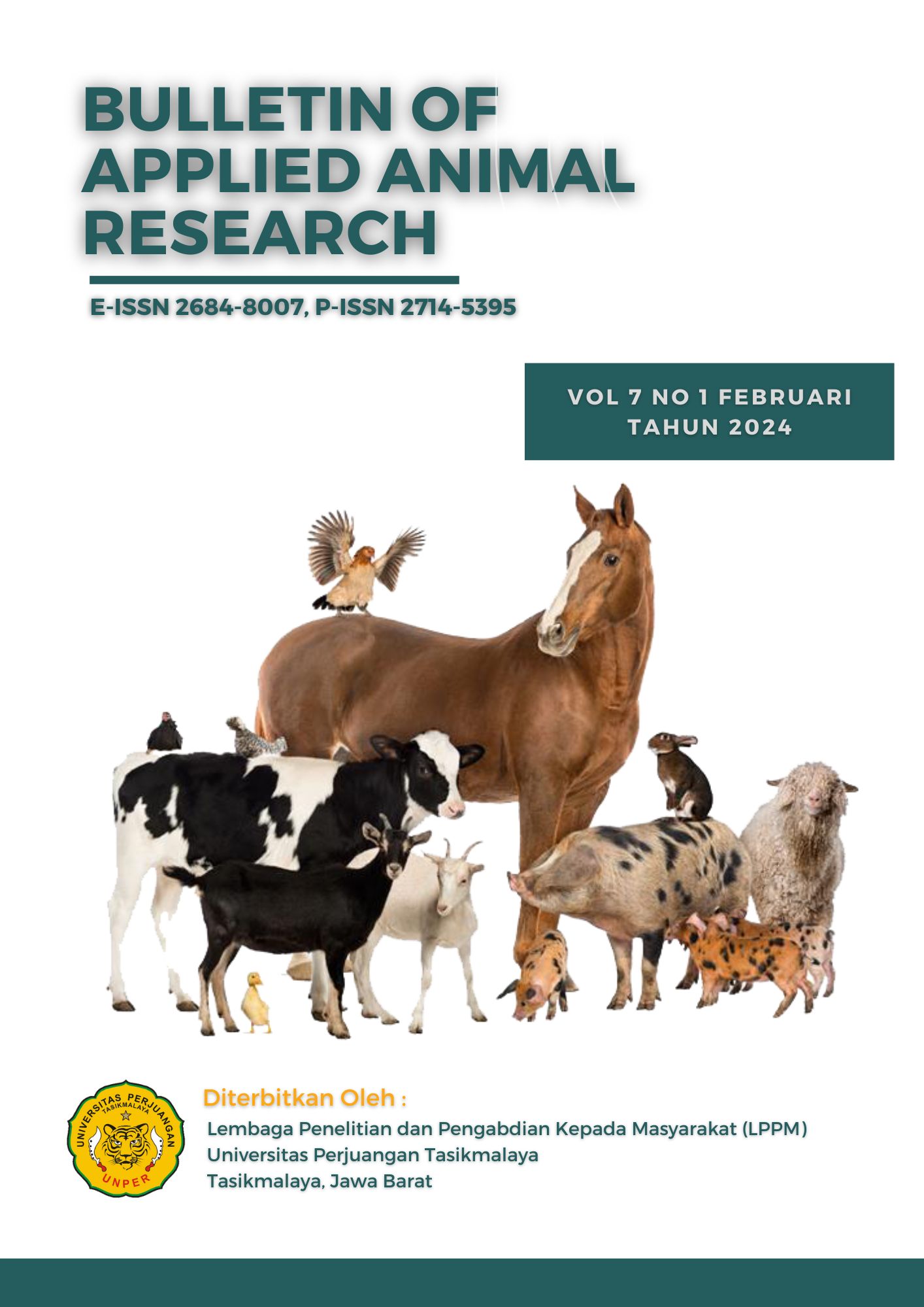Regression Model to Estimating Sentul Chicken Egg Production
DOI:
https://doi.org/10.36423/baar.v7i1.2152Abstract
Egg production increases from the beginning of production to a peak, persists for several weeks, then declines slowly. Egg production can be modeled to form a certain curve. The study aims to create an estimation model for Sentul chicken egg production using the regression method and obtain a mathematical model with high accuracy. The models used are quadratic, cubic, quadratic and quintic regression. The study used a historical survey method, namely observing records of Sentul chicken egg production kept in 2023-2024 at the Experimental Farm, Faculty of Animal Husbandry, Unsoed. The accuracy of the use of mathematical models was tested based on the coefficient of determination (R2). The R2 value for each model was quadratic 40.92%, cubic 82.45%, quartic 91.47%, and quintic 91.82%. The conclusion of the study is that the more independent variables involved, the higher the coefficient of determination
References
Al-Samarai, F.R., G.A. Al-Kassie, A.M. Al-Nedawi, and K.A.A Al-Soudi. 2008. Prediction of total egg production from partial or cumulative egg production in a stock of White Leghorn hens in Iraq. International Journal of Poultry Science, 7(9), 890–893. https://doi.org/10.3923/ijps.2008.890.893
Downloads
Published
How to Cite
Issue
Section
License
Copyright (c) 2025 Setya Agus Santosa, Ismoyowati Ismoyowati, Dattadewi Purwantini, Rosidi Rosidi, Agus Susanto, Elly Tugiyanti

This work is licensed under a Creative Commons Attribution-ShareAlike 4.0 International License.












